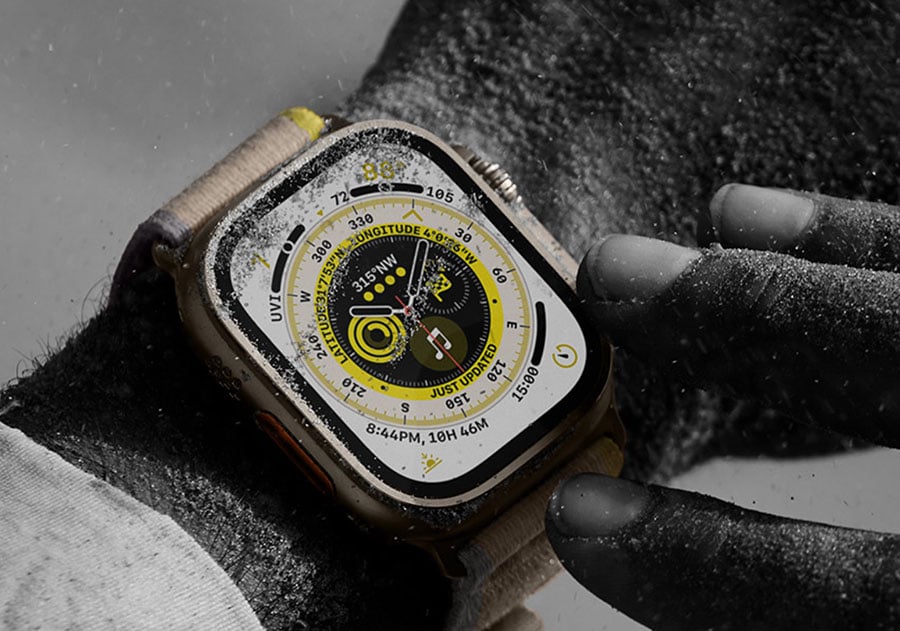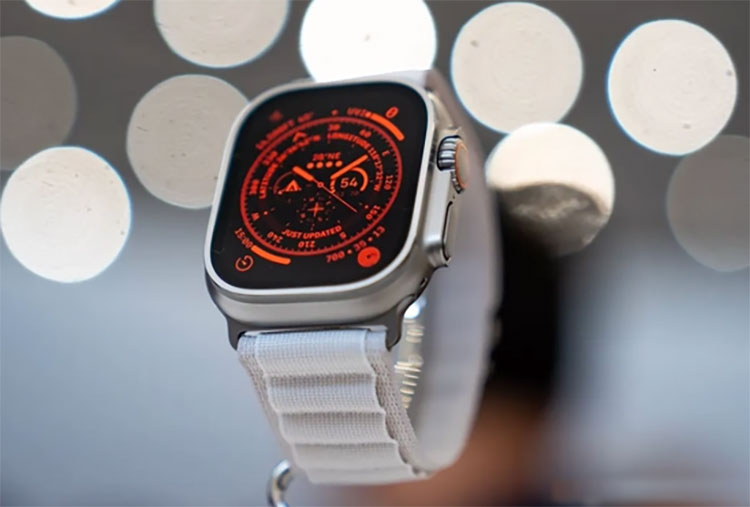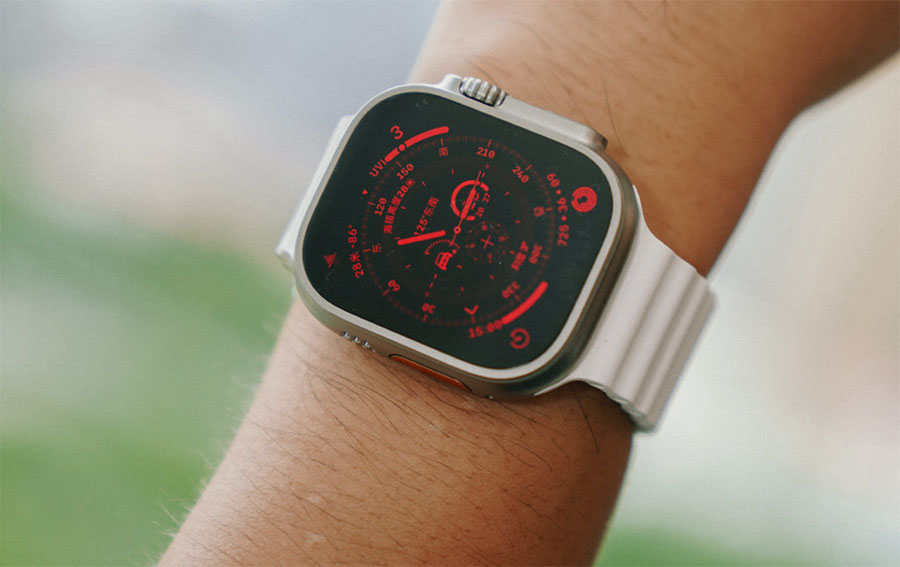
Wearing this Apple Watch Ultra, I completed a five-day trekking trip in Tibet.
The first thing I felt when I got the Apple Watch Ultra, it was indeed big, but much lighter than I thought it would be. The larger size objectively makes up for Apple Watch’s shortcomings in battery life and improves control in outdoor scenarios.
The most obvious change is the display, which makes it easier to see the customizable complications on the dial. And with a 2000-nit screen, it’s easy to see dials and sports data outdoors with this brightness.
Previously, we wore Apple Watch with a minimalist style, and two buttons and a touch screen were sufficient for interaction. But in outdoor hiking and diving scenarios, it’s very different.

In outdoor sports, there is more reliance on mechanical operation.
Because when wearing gloves or floating in the water, touch screen operations is prone to accidental touch. For this reason, mainstream outdoor watches are designed with 4-5 mechanical buttons on the side of the watch, and each of them protrudes for easy pressing.
The Apple Watch Ultra’s digital crown is rugged enough to be rubbed with gloves, and the Dock key has an increased surface area and protrudes outward for easier pressing. The custom buttons are the biggest change to get rid of the touch screen for extreme sports. Before I left each day, I pressed it to start recording, and to pause or continue, I double-pressed the custom button and the Dock key. Only when the hike is finished will I use the touch screen to end the exercise.
The 3 physical buttons are compact enough for the Apple Watch Ultra, but the customization of the keys is not extreme enough for what I experienced on foot. For example, when I press and hold the custom button, it does not open other functions, but instead appears as a shutdown screen like a long press on the Dock key. This will also lead to the compass, blood oxygen and other App in the middle of the hike, the physical button is not enough to support the application switch, still rely on the touch screen operation.
It is reasonable to say that the larger screen to see the data is also more clear. After the actual hiking experience, I think it’s more important to see than to hear. Especially during the summit stage above 4500m, my heart rate jumped from 120 to 153 every 10 steps, and although I still had the strength to lift my wrist, I didn’t feel like looking at the time, pace, and another information line by line.
On the hike, I asked a few fellow hikers wearing smartwatches what they would be concerned about on their watches. There were a few main things that people were most concerned about: route, elevation, heart rate, and the infrequently used but indispensable blood oxygen saturation.
Pre-installed routes are supported in some outdoor watches of Jamin and Sonto, and Apple Watch can import routes through third-party software two-step road, outdooractive, and Wikiloc. During the five days of the trek, I mainly used the Apple Watch Ultra to record the route and backtracked once in case I needed to do so.

Elevation and heart rate are recorded for viewing during and after the hike.
I will adjust my pace based on these two data during the hike. After the hike is over, the climb and heart rate will be used as a reference for the difficulty of today’s hike, which will be used to decide whether to continue tomorrow or to take it slow.
Regarding the accuracy of the elevation, the local guide said, “According to past experience, the elevation shown on the smartwatch is about 100m off from the actual one. After I measured the elevation at two places, the Apple Watch Ultra’s elevation error was within 10 meters, which is quite accurate.
What about battery life? Let’s start with the conclusion that the Apple Watch Ultra lasts for more than 30 hours, but that’s for everyday use. If you want to continuously record more than 5 hours of exercise, you still have to charge it once a day.
I wore it to work before this test. I put it on at 9:24am on the first day and used the watch to record my run for 1 hour until 18:04pm the next day when the watch reminded me that 10% of the battery was left.
For the outdoor scenario, I used two tests.
With the all weather display on, I recorded a 6 hour hike starting at 10:00 am, with route tracking from third party software turned on. When I arrived at camp at 16:05, I had 37% battery left.
The all-weather display was turned off, and the 9-hour hike was recorded continuously. During this time, I played music for 40min and took photos with the screen lit for about 30min. 10% of the battery remained after the hike.
So, who needs it?
During the hike, I also talked to my friends who were wearing smart devices about what kind of outdoor smart watch they wanted. In the answers they gave, they put smart all in the first place, followed by outdoor features.
Now we have no shortage of smartwatch options and enough features to meet our daily fitness routine, but to go further, we still need to look towards outdoor watches that are more adaptable to the limits. When the Apple Watch Ultra combines the two, it can deal with extreme environments and record movement while intelligently managing it.
It’s a simpler option for outdoor enthusiasts.







